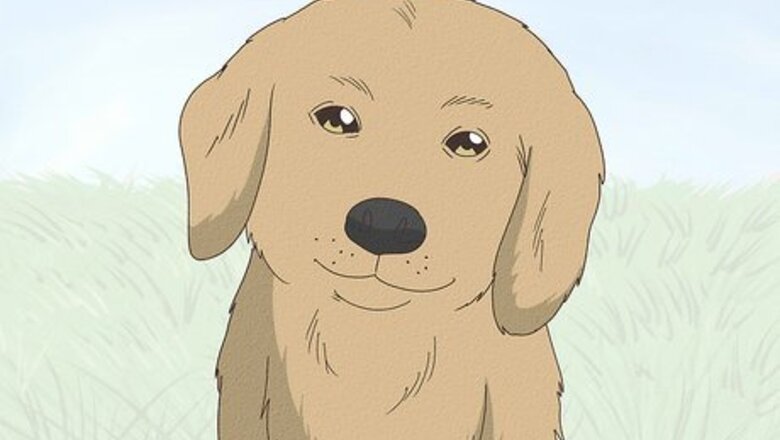
views
- Keep your puppy occupied with teething toys designed for chewing to satisfy their need to bite.
- Use verbal cues like “Ouch!” or “No” to teach your pup that biting is a big no-no.
- Introduce your pup to other dogs to help them learn the consequences of biting naturally.
Learn more about why puppies bite.
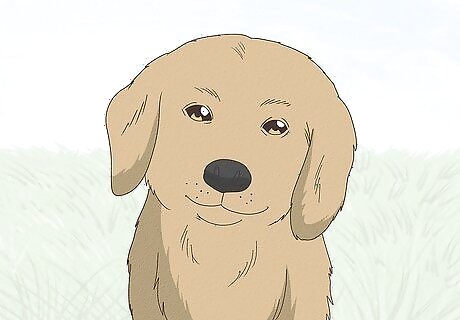
Curiosity, playfulness, and natural instincts are why your pup bites. It’s completely normal for puppies to chew and nip as they grow. They’re experiencing the world for the first time and have these strange pointing things in their mouths—they’ll naturally want to test them out! Your puppy isn’t trying to be naughty; they’re just exploring. Puppies generally teethe for about 6 months. If a pup continues to bite after teething, it may be from boredom or anxiety. Bite inhibition is a dog’s ability to control the strength of their bite, and teaching this important skill during puppyhood can help dog’s be on their best behavior as they grow.
Be vocal with deterring commands.
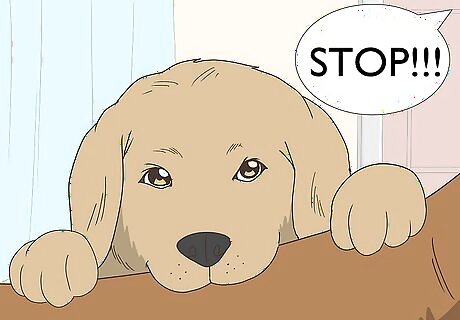
A loud “Ouch!” or high-pitched yelp can stop your pup from biting you. If your puppy starts to nibble at you, cry out or give them a firm command. They’ll most likely freeze or jump back in alarm, and that’s the perfect response. Repeat the same loud command in the same disapproving tone whenever they bite, so your pup associates their behavior with your dismissal. Use words like “no,” “ow,” or “stop.” Avoid flapping your hands or yelling excitedly if a puppy bites while playing, as they may associate this as a reward for biting. Instead, let your hand go limp and say “no” or yelp in pain. Only restart the fun once your pup has let go or backed away.
Use a taste deterrent.
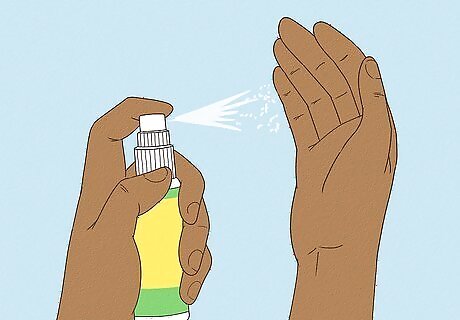
Yucky tastes can keep your puppy from chewing you and your belongings. Before you start playing with your pup, spray a taste deterrent on your hands, feet, and/or clothes, focusing on the areas they tend to bite the most. The strong smell might be enough to deter them. If not, the sour taste is sure to make them question whether or not to bite again. Let your pup investigate the areas where you put the deterrent. When they back away from it, praise them. Grannick’s Bitter Apple No Chew Spray is a popular choice amongst vets and dog owners because of its non-toxic ingredients. Taste deterrents don’t work on every dog, so watch your pup closely when first using one to make sure they’re not drawn to the odd smell and taste.
Redirect their attention with toys.
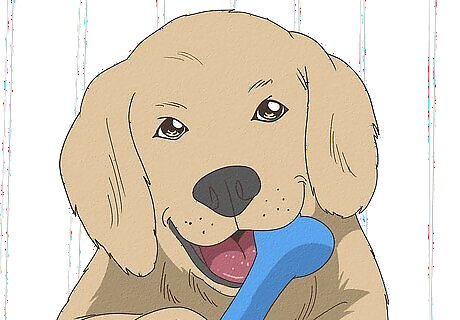
Frozen teething toys and rubber chew toys satisfy your pup’s need to bite. Puppies teethe just like babies, and they often bite out of curiosity. Swapping your sock, shoe, or hand with a toy designed for chewing is an easy way to say, “Hey! Don’t bite that. Bite this.” Place a rubber toy in the freezer and give it to your pup a few hours later to help soothe their tooth and gum pain. Try filling chew toys like Kong with treats, so your pup is rewarded for their good chewing behavior. Keep a watchful eye on your furry friend while they play with chew toys so they don’t accidentally ingest a part of the toy. Ask your veterinarian what toys are safest for your pup's breed to chew.
Play with them regularly.
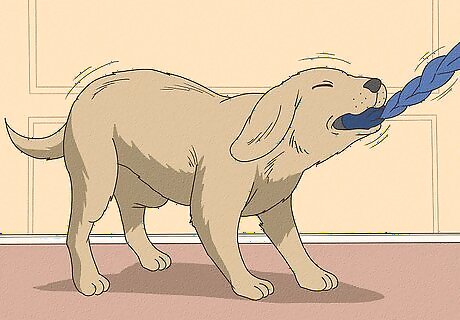
A game of tug-of-war or fetch can tire out your pup. Puppies tend to chew and nip when they’re bored and want to play. Rather than roughhousing or playing with your hands, grab a rope or ball. Keep your movements soft, and avoid flapping your arms around. This way, your puppy is only focused on biting the toy. Playing classic games like tug-of-war with your pup lets them bite and pull without harming anything. Make it your goal to tire out your pup. The more physical and mental stimulation they have, the more exhausted they’ll be, and the less likely they’ll chew!
Introduce them to other puppies.
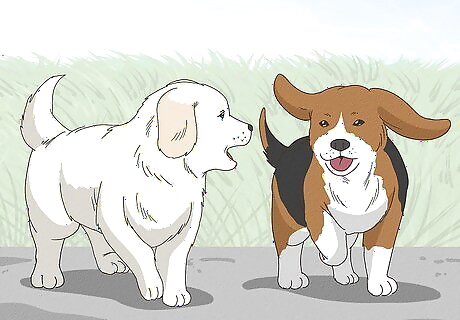
Socialization naturally teach puppies the consequences of biting. There’s plenty of pouncing and wrestling when puppies play together, and along with that comes biting. When a puppy accidentally bites another puppy too hard, the bit puppy will yelp out in pain, causing the biting puppy to let go and move away. Letting your pup play with other dogs helps them learn biting inhibition on their own because they don’t want to cause their playmate (or you) pain. Take your pup with you to friends’ houses so they can meet your pal's sweet pets. Bring your pup to the park to make new furry friends. Attend a puppy training class with your pup to learn new training techniques and meet other dogs. Leave your pup at a puppy daycare while you’re at work so they can socialize during the day.
Give them a time out.
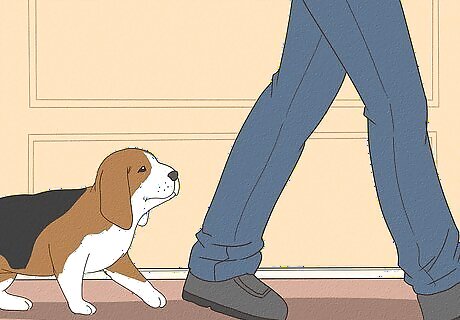
Ignoring your pup helps them understand bad behavior. Your pup loves your attention, and taking that away (if only for a brief moment) can encourage them never to do anything naughty again! When they start nipping, say something like, “Oops!” or “Too bad!” and turn around or walk away for at least 30 seconds. Keep doing this when they bite, and they’ll soon associate their behavior with your actions. Make sure to do a time out immediately following the biting behavior and not a few minutes or hours later. Otherwise, your pup may not know what they’re doing wrong.
Reward good behavior.
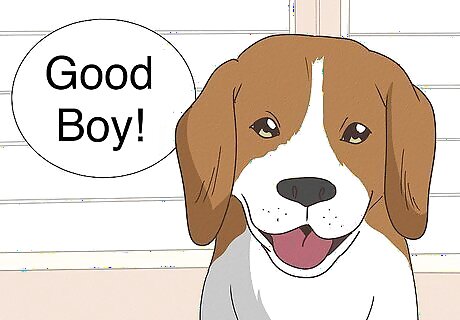
Verbal commands like “Yes!” and “Good boy/girl!” reassure your pup. Always praise your puppy if they’re doing the right thing. Whenever they follow a command or stop biting, cuddle them and talk in an upbeat tone. Not only will this make them happy, but it also lets them know that they’re doing something you like. If your pup’s being extra good, reward them with a special treat. This is an excellent way to help them associate good behavior with something positive.
Stay consistent with your rewards and deterrents.
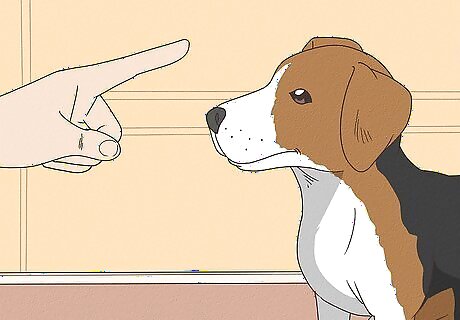
Sticking to specific training techniques can help your pup learn faster. Don’t be fooled by your puppy’s small size—they’ve got a big brain! Use the same commands and deterrent words while training, so your pup learns to associate each word with a specific reward or behavior. The more consistent you are, the more likely your puppy will pick up on the differences between “good” and “bad.” Talk to other members of your household about how you’re training your pup and ask them to approve and disapprove the same behaviors.




















Comments
0 comment